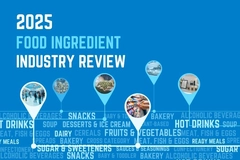
- Industry news
Industry news
- Category news
Category news
- Reports
- Key trends
- Multimedia
- Journal
- Events
- Suppliers
- Home
- Industry news
Industry news
- Category news
Category news
- Reports
- Key trends
- Multimedia
- Events
- Suppliers
Genetic tool benchmarks beef herds for carbon efficiency

The US Agriculture and Horticulture Development Board (AHDB) has introduced a genetic metric to help suckler beef producers breed cattle with lower environmental impact. The EnviroBeef tool combines data from the National Beef Evaluations to allow benchmarking across all breeds for potential carbon footprint reduction. It also supports breeding decisions to improve herd efficiency, profitability, and cattle health and welfare.
AHDB animal genetics expert Harriet Bunning says the suckler sector faces pressure to reduce emissions, and using existing data for selective breeding offers a cost-free option to improve efficiency. “A more efficient herd will be more profitable as well as producing beef with a lower carbon footprint, regardless of the system,” she says. Measures such as productive lifespan and calf survival score well in EnviroBeef, supporting both sustainability and welfare goals.

EnviroBeef scores appear alongside National Beef Evaluation results. A score of -10% indicates an animal has the genetic potential to reduce the carbon footprint of suckler beef by 10% compared to the UK average. Producers can use the data alongside health, temperament, and other criteria to select breeding stock, cull animals, or retain replacements.
The National Beef Evaluations draw on birth, death, and calving records from the British Cattle Movement Service, carcase data from abattoirs, and pedigree data from breed societies and milk recording bodies. EnviroBeef can score bulls, cows, and growing cattle where sufficient data exist. Bunning says accuracy is measured as a percentage, with higher figures reflecting greater certainty in the score.
Leicestershire beef producer James Herrick says reducing his herd’s carbon footprint is a priority and that breeding more efficient cattle supports both environmental and business objectives. “If we can breed more efficient cattle, that also helps our bottom line,” he says.










